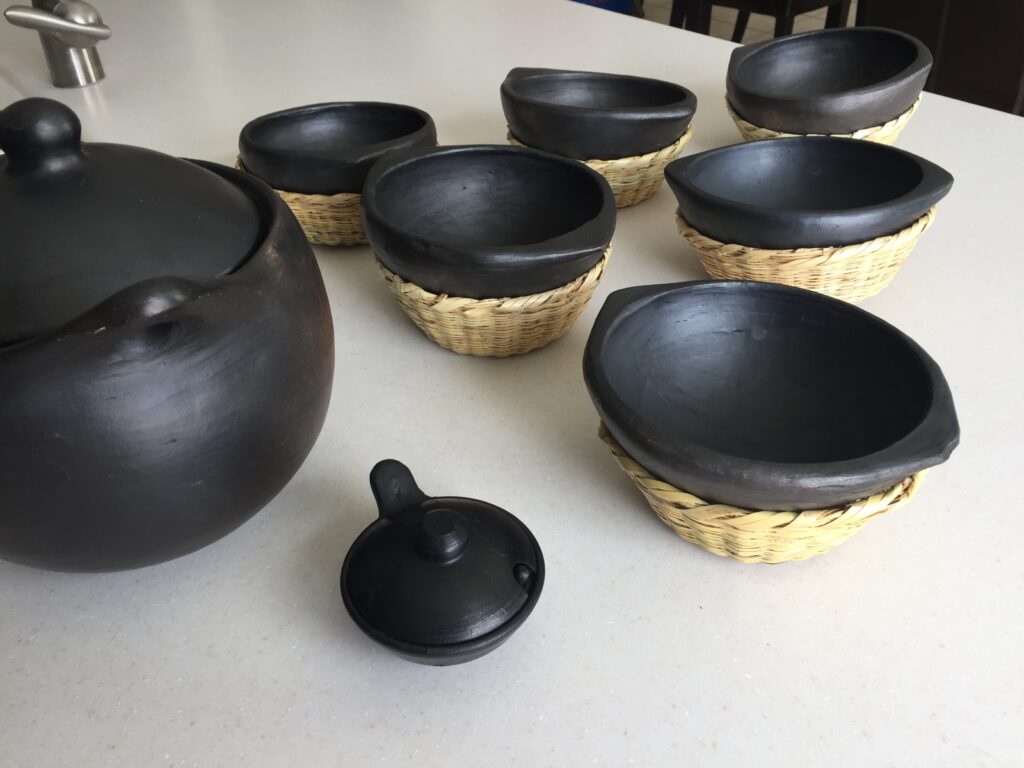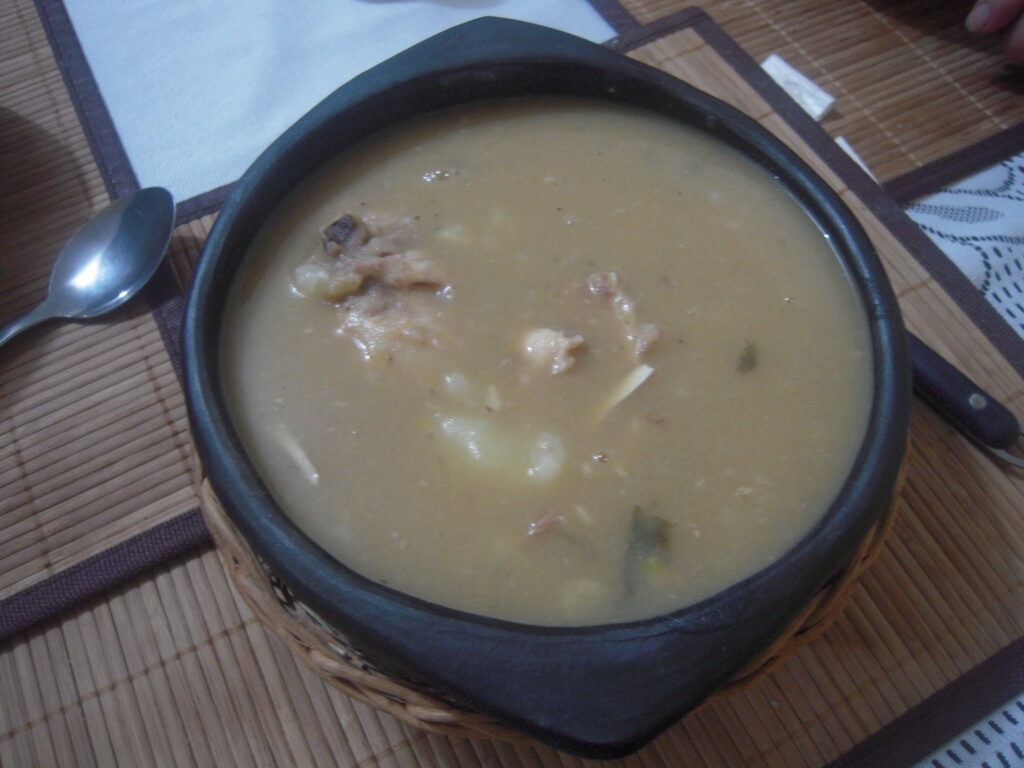La Chamba pottery is a traditional type of pottery that originated in the small town of La Chamba, located in the Tolima region of Colombia. The pottery, which is known for its distinctive black color and organic shapes, has a rich history that dates back to pre-Columbian times.
In addition to its beautiful pottery, La Chamba is also known for its delicious traditional soup called ajiaco. This hearty soup is made with chicken, potatoes, corn, and a variety of herbs and spices. It is typically served with avocado, capers, and cream on top.
The origins of La Chamba pottery can be traced back to the indigenous people who lived in the region before the arrival of the Spanish colonizers. These ancient potters used local clay and natural pigments to create vessels for cooking, storing, and carrying water. The pottery was fired in open pits, using wood and other organic materials as fuel.
The pottery of La Chamba is well-suited for use in cooking and serving traditional dishes like ajiaco. The black clay of La Chamba pottery is highly porous, which allows it to retain heat and moisture. This makes it ideal for slow-cooking soups and stews, as well as for keeping food warm at the table.
The arrival of the Spanish in the 16th century brought significant changes to the pottery-making traditions of La Chamba. The colonizers introduced new techniques and materials, such as the potter’s wheel and glazes, which allowed for the creation of more refined and intricate pieces.
Despite these changes, the potters of La Chamba continued to use traditional methods and materials, such as natural pigments and local clay. This helped to maintain the unique character and aesthetic of La Chamba pottery, which is distinguished by its organic shapes and deep black color.
As for the history of ajiaco, it is believed to have originated in the Andean region of Colombia. It was originally made with a variety of local potatoes, as well as other vegetables and herbs. Over time, the recipe for ajiaco has evolved and adapted, but it remains a beloved and iconic dish in Colombia.
Today, La Chamba pottery is an important part of the cultural heritage of Colombia. The potters of La Chamba continue to use traditional methods and materials, passing down their skills and knowledge from generation to generation. The pottery is still widely used for cooking and serving traditional dishes like ajiaco, as well as for other purposes.
In conclusion, La Chamba pottery and ajiaco are two enduring symbols of the rich history and cultural heritage of Colombia. Whether you are enjoying a bowl of hearty ajiaco soup in a La Chamba pot, or admiring the beautiful pottery on its own, these traditional art forms continue to captivate and inspire people around the world.


















